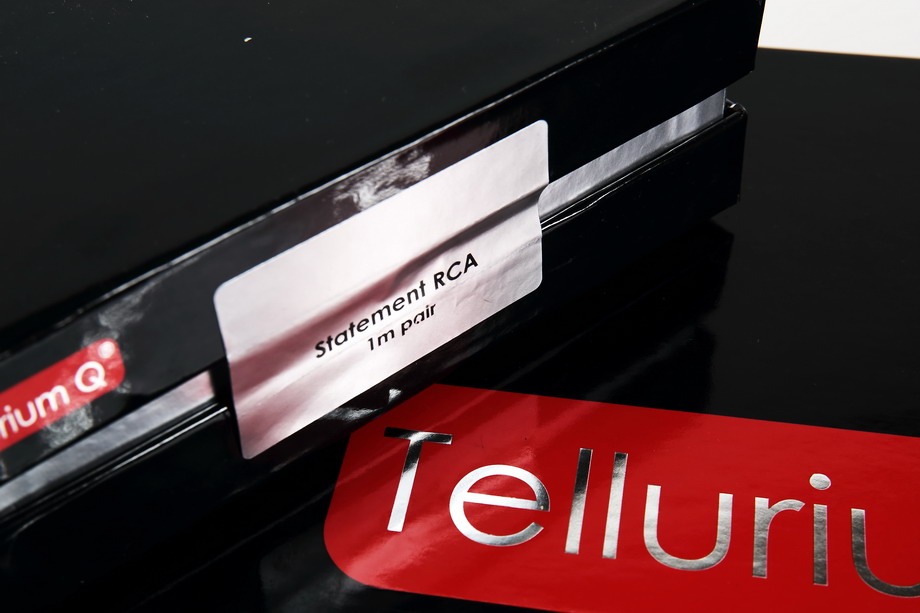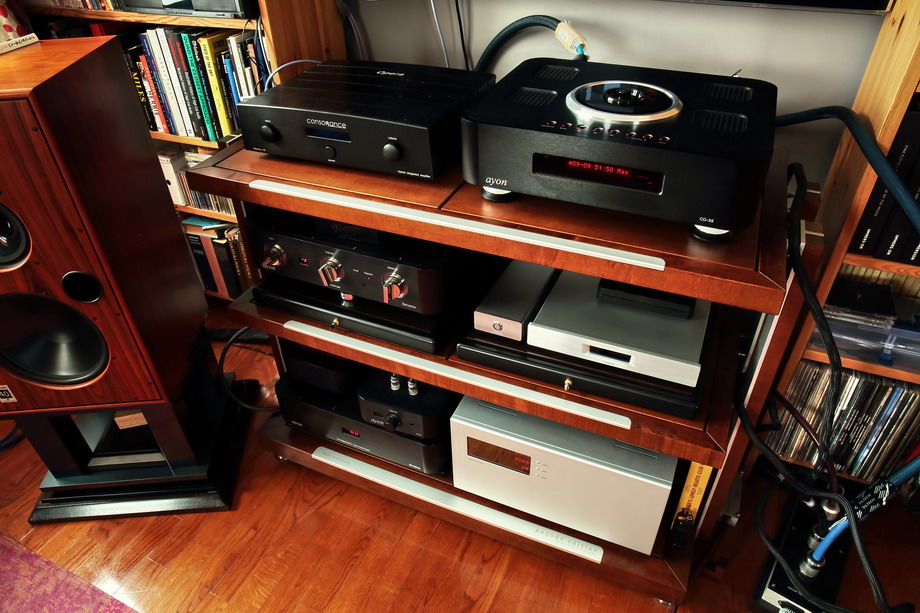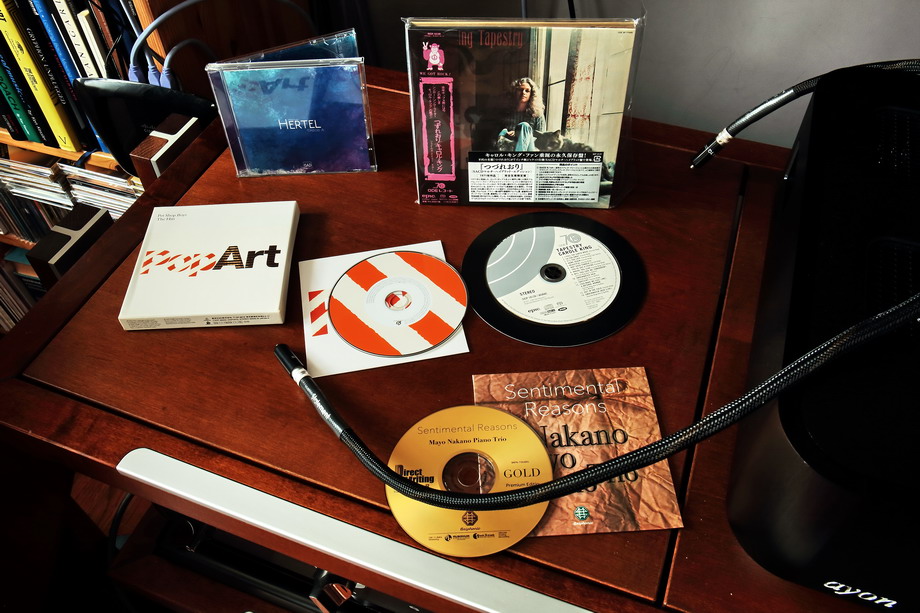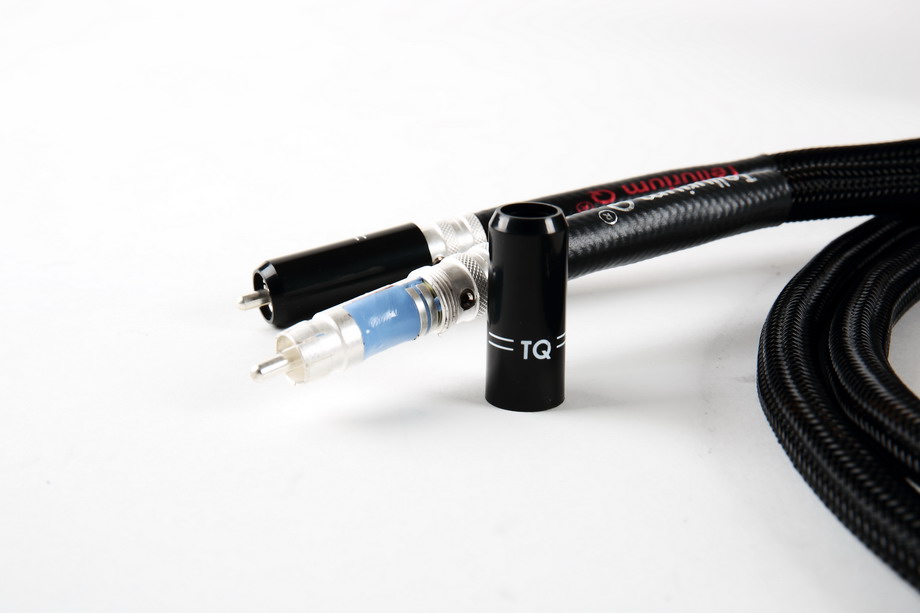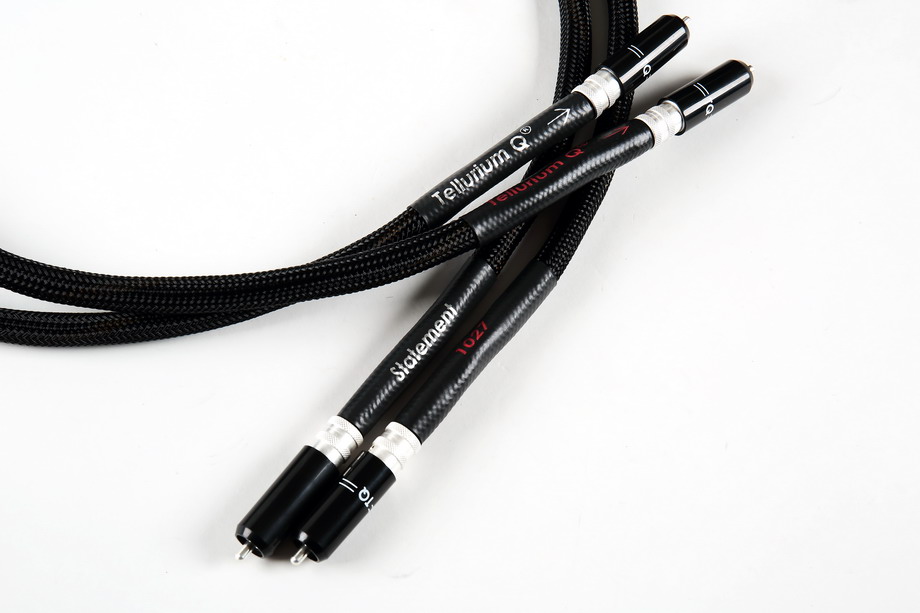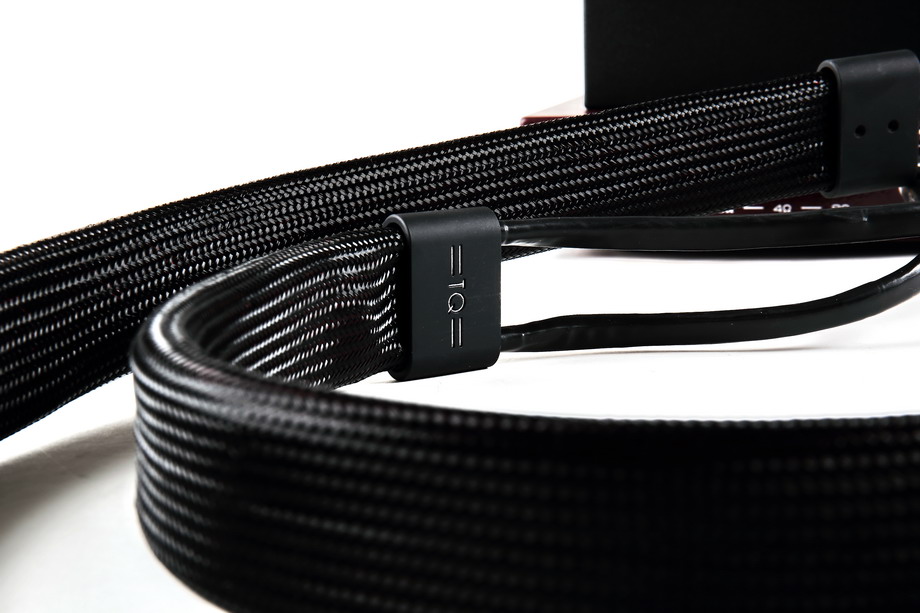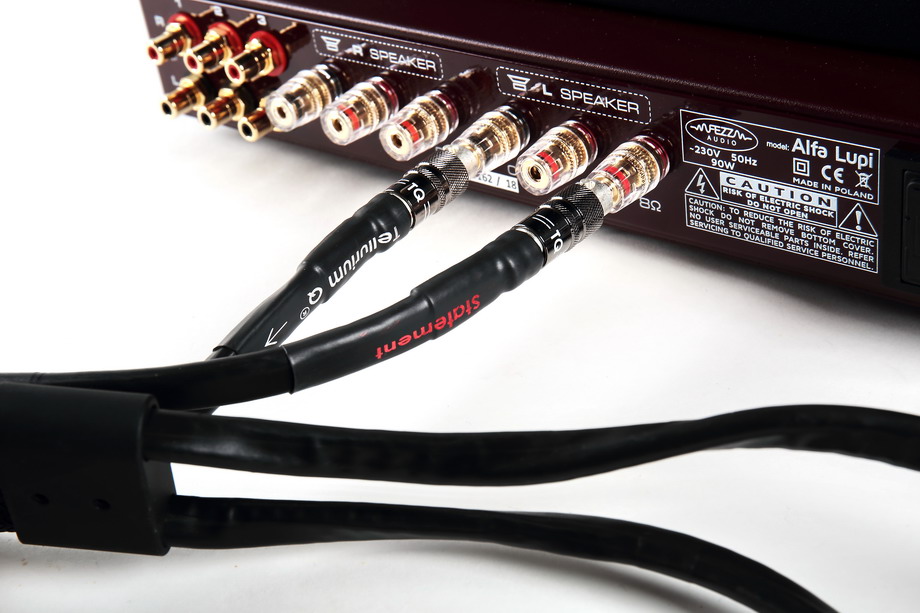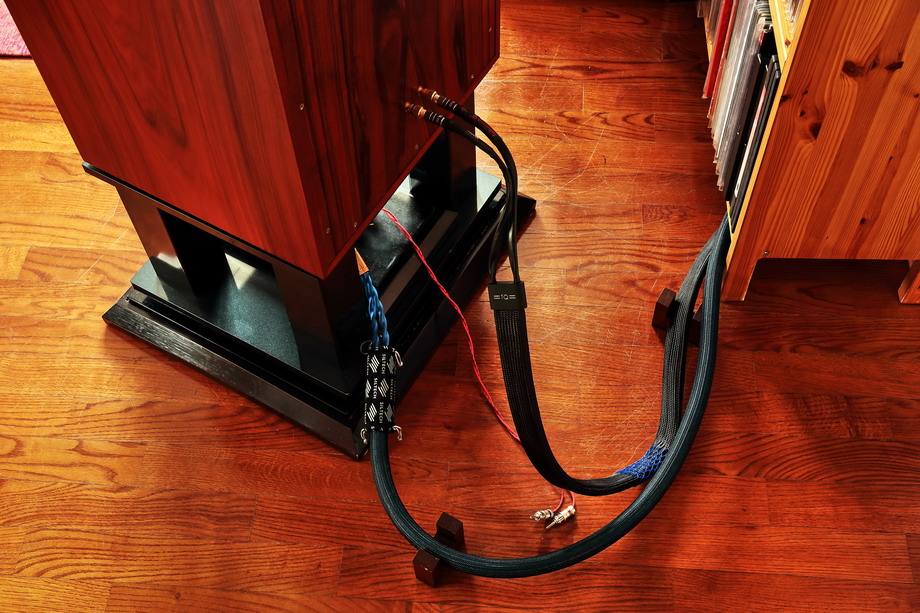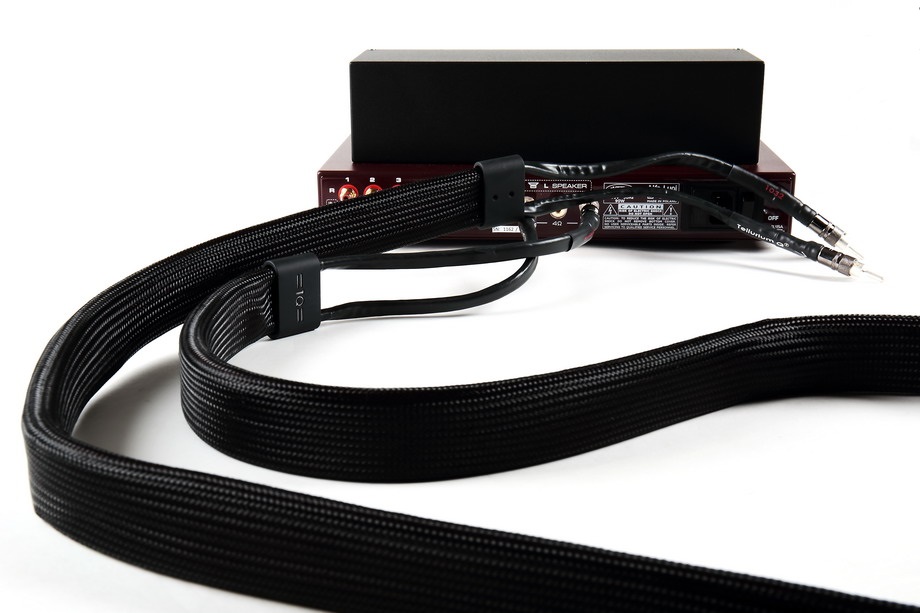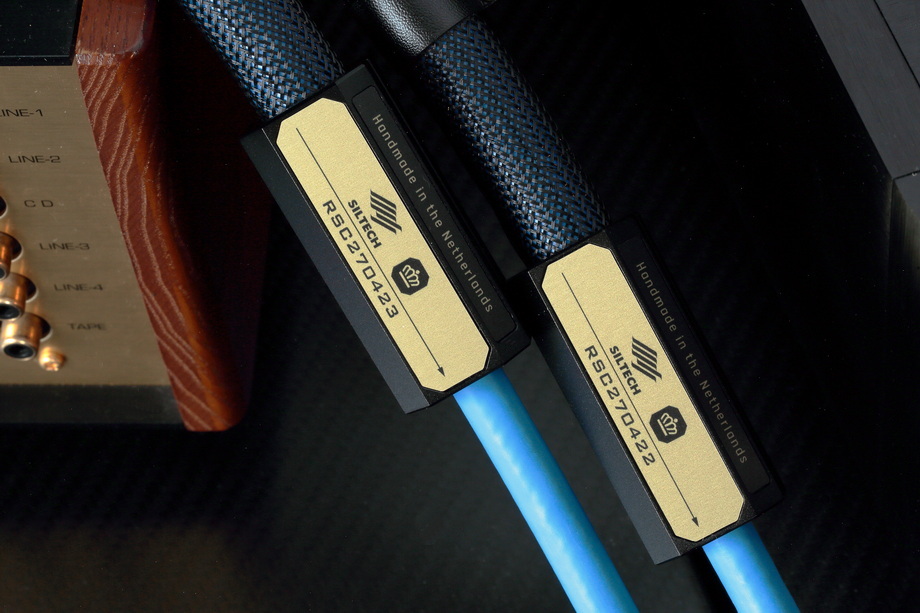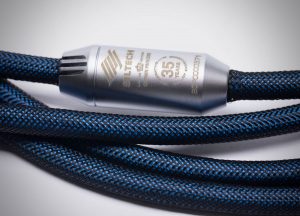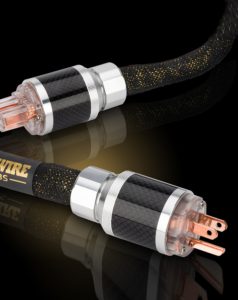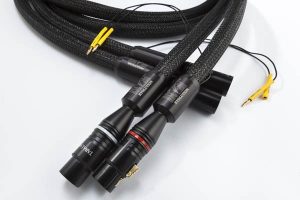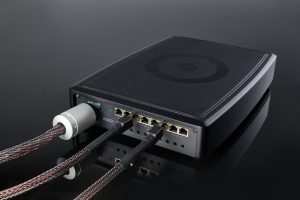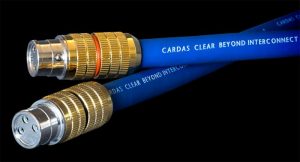I wonder if Geoff Merrigan, the owner and designer of the British company TELLURIUM Q is having nightmares? The question seems to me to be all the more justified, since both him and his company have roots in the pro world, that is, one set on functionality and utilitarianism and reluctant to any experiments. The experiments are time-consuming, and professionals simply don't have it. Also, reliability and adherence to certain standards is equally important to them, even if they are—from the audiophile market's point of view—rather low. This provides a guarantee of repeatability, and thus safety, and security equals—again—saved time, and thus money.
Belonging to the latest and top Tellurium Q line called Statement, the reviewed ones are very expensive, even by industry standards. I suspect, however, that Geoff simply can not pretend anymore that something is not better, when he clearly hears that it is. And 'better' is a synonym for 'more expensive', not just in audio. Therefore, he would probably have had trouble sleeping if he didn't do something about that knowledge and pretended that everything was OK. So I think that—to sum up—he sleeps like a baby because he is free on one side (pro) and satisfied on the other (high-end).
Statement
The top series is something that sooner or later must happen to every producer. It is obviously a top in absolute terms. If the company is sure that this is the absolute peak of its capabilities, summa technologiae, so to say, calls its product in one of the accepted ways, such as: "Absolute", "Ultimate", or as in this case "Statement". Which has often funny consequences, because it is clear that this is just another stop, not the final destination. The Crystal Cable company found their way out of such situation. First they called their top line the Absolute Dream and then, when they came up with even better products they called new series the Ultimate Dream. I wonder what Geoff will come up with next.
For the time being though, when developing the Statement series, he used all his knowledge, forgetting about the costs associated with this project and production. The line includes RCA (asymmetrical) and XLR (symmetrical) interconnects, speaker cable, jumpers, as well as power cable. In the company materials, one reads that when designing them, he followed the same rules as even with the basic Black cables, only more.
What attracted my attention at first was an “economical" usage of metal, both in terms of conductors, as well as the finishing elements of the cable and its connectors. Comparing the cable design process to the design of racing cars, he says that the lighter the car, the faster it will go, which also applies to the transmission of signals. He also avoids increasing the capacity—in his opinion, the greatest enemy of high-quality transmission. This is why his speaker cables feature an "eight" design, i.e. with widely spaced positive and negative conductors. This is probably related to the Geoff's most important assumption, namely the phase coherence of the signal, and the smaller the cable capacity, the smaller the shifts. Capacity is reduced by moving the positive and negative wires away from each other.
The owner of Tellurium Q rejects the idea of pursuing the purest possible conductor material—for example OCC, 7N etc.—saying that it is pointless. He believes that—which, as he says, is "surprising"—to achieve pure sound one does not need the purest possible conductors. This is because each conductor acts as a filter interacting with different intensities on different frequencies. To counteract this, one has to properly balance the material of the conductor, dielectrics, screens, similarly as constructors do, tunneling the flow of air in racing cars—and this is a solution to the problem, because even the purest metal is characterized by its characteristic phase shifts.
For such "tuning" time and money are needed. You should pay attention to every detail, even for things like solder - the company uses its own blend without silver and lead (HERE). Just like the mentioned Vovox cable prepared by the Nautilus company, like the Siltech cables, Tellurium Q connects conductors and plugs in a controlled temperature and solder them with the mixture they developed. As Geoff says, the proportions differ for each cable from his lineup. Also, the method of silver-plating of the joints is important for this company—they try to precisely control the composition of the mixture during the electrolytic bath, as well as the plating process itself.
It must be said that the same assumptions apply to all Tellurium Q series, Statement stands out only by applying the same rules but pushing the boundaries even further. Looking at the new cables it will be difficult to find out what their status is. Same as the Acoustic Revive RCA-1.0 Absolute-FM interconnects tested some time ago, the Statement looks similar to cheaper cables from the lineup. The top series is a bit stiffer, but without knowing exactly this company's products there is no way to tell how they differ from—for example—the Silver Diamond series.
What can be a problem. I perfectly understand the approach in which we spend as little money as possible on the form, i.e. the appearance of cables and their boxes, it is reasonable. But people do not follow common sense, they want something that is called the "pride of the owner". So they want it to be immediately recognizable that they own expensive cables, at least different from other models. With Statement, they will not get it, they need to listen to the music to find out superiority of these cables.
TEST METHODOLOGY
The Tellurium Q Statement cables were tested in our reference system connecting the output of the Ayon Audio CD-35 HF Edition Super Audio CD player and the Ayon Audio Spheris III preamplifier (interconnect), as well as the Soulution 710 power amplifier and the Harbeth M40.1 loudspeaker (speaker cable). The Tellurium Q system was compared to the reference system, ie Siltech cables from the Triple Crown series.
The interconnect was compared also with Crystal Cable Absolute Dream and Acoustic Revive RCA-1.0 Absolute-FM. I also dedicated a separate comparison to Tellurium Q Silver Diamond cables, that I've been using in many tests for the past 3 years. I performed A/B/A and B/A/B comparisons with A and B known.
TELLURIUM Q in High Fidelity
- TEST: Tellurium Q BLACK II HERE | speaker cable
- AWARD | BEST SOUND 2015: Tellurium Q SILVER DIAMOND HERE | speaker cable
- TEST: Tellurium Q SILVER DIAMOND HERE | speaker cable
- TEST: Tellurium Q ULTRA SILVER – interconnect + speaker cable, HERE
- AWARD | BEST SOUND 2014: Tellurium Q BLACK DIAMOND + BLACK DIAMOND + BLACK POWER - interconnect + speaker cable + power cable (system), HERE
- TEST: Tellurium Q BLACK DIAMOND + BLACK DIAMOND + BLACK POWER - interconnect + speaker cable + power cable (system), HERE
- MICROTEST: Tellurium Q ULTRA BLACK – speaker cable, HERE
- TEST: Tellurium Q IRIDIUM 20 – power amplifier, HERE
SOUND
Recordings used for the test (a selection)
- Carol King, Tapestry, Ode Records/Epic/Sony Music Labels SICP-10120, 7" SACD/CD (1971/2017)
- Mikołaj Hertel, Epizod A, GAD Records GAD CD 035, CD (2015)
- Nakano Mayo Piano Trio, Sentimental Reasons, Briphonic BRPN-7006, Direct Gold CD-R (2017)
- Pet Shop Boys, PopArt: Pet Shop Boys – The Hits, Parlophone/Toshiba-EMI TOCP-66252-54, 3 x CCD (2003)
- The Beatles, Sgt. Pepper’s Lonely Hearts Club Band, Apple/Universal Music Group 5745530, "50th Anniversary Edition", CD (1967/2017); HERE
I have already reviewed a large part of Geoff Merrigan's offer and I think that I understand what he means, ie what objective criteria he accepts to create particular type of sound. I am not writing about a "neutral" sound, because it is only an approximation, a term abused by producers and distributors, which has thus lost its true meaning. Anyway, in audio there are only "roads to", not solutions. That is why I am talking about the criteria and the type of sound chosen. Based on my knowledge, I can immediately say that the Statement series kept all the features of Silver Diamond cables, that I valued them for. And also that these are completely different cables.
Interconnects
This interconnect is the best Tellurium Q presented so far, although it still offers a characteristic sound for this brand. Direct comparison with the reference Siltech interconnects shows quite differently shaped timbre, closer to the one of Silver Diamond. The soundstage is also built differently and the approach to the relation between selectivity and resolution is different. This is because Statement plays with a clear, open sound. When I listened to, for example, Carol King from the Tapestry, a disc recorded in a quite dull way, almost without treble and with little selectivity, with the reviewed cable everything was a better pronounced, more unambiguous. The vocal opened, adding more "light" to the mix, but not to raise it tonally, but to make it more credible.
I had a similar impression while listening to the copy of "Direct Writing CD-R" Sentimental Reasons by Nayako Mayo Piano Trio. It's about tan impression of greater expansiveness of the sound we get with Statement. This is a cable that goes deep into the recording, just like Gil Evans during the remix of The Beatles Sgt. Pepper’s Lonely Hearts Club Band, i.e. we get the same sounds, but differently placed in the hierarchy. With the reviewed cable "flow" become more important , the leading edge is not as hard as with the Silver Diamond, but more pronounced than with the Siltech cable, stronger than with the Acoustic Revive, which would the most similar sounding one of the bunch.
So when in the Mayako recordings, in terms of selectivity extremely resembling an analog tape, the cymbals speak, then with Siltech they are more hidden, more strongly fused with the midrange. And it is the midrange with the Dutch cable that is stronger and denser than with the Statement. The latter, perhaps due to this feature, perfectly shows the dynamics of the recording, for example when double bass or percussion play. It offers recordings a kind of "pull" from which it shoots individual sounds and larger fragments, bringing them closer to live sound.
It shapes space in a similar way. It distances the foreground and "chills" it down emotionally. And now—in a direct comparison with such a warm interconnect like the Crystal Cable Absolute Dream, the Tellurium Q cable does not seem cooler. It's a high-end level after all, and such simple distinctions are losing their raison d'être. I am talking about something else, about toning the "pressure" which the sound exerts on the listener. With Crystal and Siltech, we have a full foreground that comes towards us, emotionally attacks us a little, and Statement withdraws and tones it down.
Witch approach is better? It is difficult to say because we are talking about a mechanical reproduction of the recording, that is, about the double interpretation of what was happening in the studio or on the stage. Therefore, to make a choice one has to define one's preferences. As I say, it is the same level on which the simple distinction of light-dark, fast-slow sound lose meaning, because we do not consider them separately, but as part of larger picture (structure). In any case, with Tellurium Q, we get a faster, stronger, more clearly defined sound, with the foreground more distant from us.
There is no room for coincidence in this performance. The cable is "compatible" with any music and any system. The bass goes deep and the treble is also nicely extended. The sound is coherent, although objectively the midrange has less energy and is less saturated than with Siltech, and the tonal balance is set higher than with both Siltech and Acoustic Revive. And yet, even recordings like those from the Pet Shop Boys' PopArt compilation sound naturally—if you can even say that about synthesizers—and enjoyably.
The version I listen to comes from Japan and is probably the best remastered of recordings of this duo, although made in England, by Tim Young in the Metropolis studio. But Japanese pressing always improves the tonality of recordings and reduces their nervousness, which I personally associate with the reduction of jitter. In this case, it's unusual, because the discs are not regular Compact Discs, but Copy Control Disc, which usually ruins the sound. Tellurium Q flawlessly showed its advantages, such as a strong, warm down and dull upper treble, which in other editions leads to brightening the midrange. There was not even a hint of a stronger attack of hissing sounds, cymbals, etc.. But the cable did not try to extract the details when they were not there.
All this fit into a comparison not requiring evaluation, we choose what suits us more. However, there is something that distinguishes the Statement interconnect from the top Siltech one; resolution. At the beginning I mentioned the fact that the proportions of selectivity and resolution are different here. Statement is highly selective, more so than Siltech and Crystal, more even than Acoustic Revive. But it does not emphasize the resolution as much as the Triple Crown interconnect, which is quite clear with every type of music. We get faster, stronger, more unambiguous presentation and better defined in terms of the bigger picture, but also less saturated and not so rich internally in harmonics as with Siltech Triple Crown.
Speaker Cables
The more surprising for me was the speaker cable. It sounded differently than the interconnect. It is first of all darker, darker even than the Siltech with which it was compared. It is a darkness resulting from the perfect coherence of all sub-ranges and high resolution, not from the roll-off of treble. But when I listened to the beautiful, short track called "Episode A" from Mikołaj Hertel album under the same title, it was immediately clear to me that the center of gravity was shifted down to the lower midrange.
It was really a refined sound. The midrange and upper bass range were very energetic, although it was not an ultra dynamic sound. It was about an energy that was part of something bigger, especially some drama in the music. So I got a very saturated, dense sound that preserved the selectivity of the Silver Diamond cable, but now included in the tone and saturation. Yes, it's a saturated sound, you could even say it's creamy, which brings it closer to the sound of such cables, as the Crystal Cable Absolute Dream.
I started with "Hertel", and this is because it is a song with a fairly simple harmonic structure, but rich in shades. The accompanying noise, this is an analogue recording after all, was less audible with the English cable, because the midrange was slightly more emphasized. Which was confirmed also when listening to the "Heart" from the Pet Shop Boys compilation. This is an old, analogue recording that sounded very nice with Tellurium Q. It is smooth and creamy in itself. The tested cable did not deepen it, but slightly enhanced, it could seem that it warmed it up but it wasn't the case because there was no change in tonality. What it did was closest to what turntable do with recordings.
The Statement speaker cable primarily focuses on the dense tone. Its dynamics is high, but unlike the cheaper models of this manufacturer, as well as the Statement interconnect, it does not attract attention, it is secondary to the tonality. Carol King's Tapestry, an album that sounds as if it was recorded with a blanket separating performers from microphones, but with a great pulse and excellent music sounded in a somewhat calmed way. It was not even about closing the sound in, absolutely not, but about a slight withdrawal of the vocal towards the background.
The sound stage is being expanded along the axis of the listening position, the reverb building it in breadth are—in comparison with Siltech Triple Crown—limited and shorter. It did not surprise me. Siltech is many times more expensive and in terms of imaging is the best cable I've ever heard. Tellurium Q's strong suit lays in something else—in energizing recordings, in enhanced midrange and upper bass, but not through coloration—it's a very well-balanced cable—and through saturation with small details that make us perceive this sound as "rich", "full".
Interconnects + speaker cables
Each of these cables can be used separately, they are very good, but so different that they will cause significantly different changes in the system. Let's give them a chance, and listen to them in a set, and we'll hear something that I assume Geoff wanted. We will then get both the density and energy of the midrange of the speaker cable, as well as the speed and selectivity of the interconnect. In proper proportions, not one-to-one, but complementing each other.
Carol King sounded with this system really good, keeping her own character, but with better opening and dynamics than when only the Statement speaker cable was in the system. It delivered a great tonal depth and imaging. The foreground was moved a bit further away from listener and yet the presentation was very intimate. This is a rare skill, because increasing the distance from listener is associated with less emotional, less expressive presentation. Similarly, moving it closer leads to more engaging performance. The Statement system was different, which I must admit, I liked a lot.
The Tellurium Q cable loom sounds warm on the one hand, and on the other it is very fast and shows many details. The cheaper cables of this company were more open and brighter, still remaining on THIS side of the force. But they were the ones that exposed all problems of the system and recordings mercilessly. Statement is different. Like Siltech's Double and Triple Crown, it seems dark. Which is not true, but that's the first impression. It seems so because it does not expose the problems of recordings going deeper into the connections between sounds. We get a creamy, very dynamic performance that promotes midrange and upper bass, and that's because that's the part of the range our hearing is most sensitive to, not because it artificially emphasizes it.
Because the sound seems quieter due to the fact that there is no distinctive treble, you can turn up the volume without any problems with brightness—then you will also appreciate its dynamics. It is an internally rich, high-quality sound that requires familiarity with live music and high end systems. Silver Diamond is a great cable, but Statement is much better in every respect. Even more so as a system. Separately, they are very good cables, you can use them to tune the sound of the system without harming its coherency. Together, however, they deliver something more, which will appeal with any kind of music, They give fullness, energy and richness of emotions. They are not perfect in terms of resolution or the width of the soundstage, but what is? Therefore, without any hesitation I'd like to award the Statement series the highest distinction a product can get from High Fidelity, i.e. GOLD Fingerprint, our highest award.
DESIGN
Tellurium Q is an "engineering" company, and yet its boss, Geoff Merrigan, is not willing to share technical details about his products. It's no different when it comes to the Statement series. I will describe them as I saw them, adding some information that was obtained directly from Geoff or from the company's website.
The company name is significant. It reveals the type of conductor used in their cables—it is tellurium copper. In turn, Q refers in this case to electric filters. As we have already mentioned, the audio signal is modified at every stage of a transfer in a manner characteristic of the materials used and their configuration. Hence, the reference to filters and balancing these variables in such a way as to obtain the lowest possible phase shifts in the whole band. Q in the technical dictionary means the q-factor of the filter, i.e. how widely it works.
Statement interconnect is similar to the cables from the Black Diamond and Silver Diamond series. It is not too thick, although it is stiffer at the same time. It is braided with a black mesh, and at the ends there are white and black shrink sleeves, on which the company logo and an arrow indicating the direction of the signal are placed. RCA plugs are very nice—the contacts are silver-plated.
The loudspeaker cable features a very distinctive appearance—the "eight" I mentioned very well describes its structure—quite thick positive and negative runs are separated from each other by a rigid, vertical dielectric element. If we looked at the cross-section of such a cable, we would see an eight. This means that the cable is not round, only flat, reminding a bit of a wide tape with beads at the edges. This type of design is characterized by a very low capacity, but a significant inductance. Let me remind you that for a long time such cables have been produced and recommended by Naim Audio and Linn for their amplifiers. Due to the high inductance of such cables, they could eliminate coils from the outputs of their amplifiers.
The tested Statement cable is terminated with silver plated banana plugs. As Geoff emphasizes the contact coating is very careful and is characterized by a subdued color, it is not "shiny". And, he says, shiny silvering can look nice, but they are worse than satins in terms of conductivity. The only visible difference between the Black Diamond and Silver Diamond models is the color of the aluminum piece connecting the cable ends—in the Statement series it is anodized for black color.
Price (in Poland):
- interconnect RCA 19 999/1 m
- speaker cable 39 995/2.5 m
TELLURIUM Q Ltd
The Willows | Bonds Pool
Langport | Somerset | TA109QJ | UK
MADE IN GREAT BRITAIN
Text: Wojciech Pacuła
Images: Wojciech Pacuła




